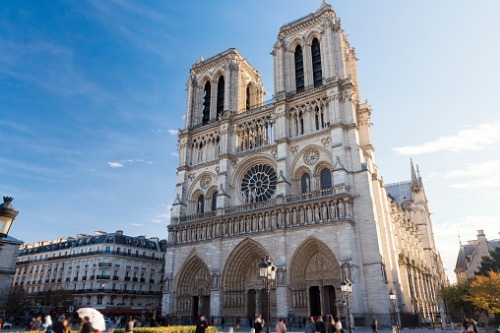

Earlier this month, the world watched in disbelief as one of Europe’s most treasured landmarks went up in flames – but while the Notre Dame fire was a devastating tragedy, one industry expert says it will also help spark some vital conversations around the risk management of historic buildings.
Warren Hutcheon is the CEO of Ansvar Insurance, which specialises in offering insurance solutions to both the heritage and faith sectors, among others. He says disasters such as the recent Notre Dame fire often prompt owners to reconsider their own risk management strategies.
“Events of this nature do raise awareness with people, and while the events themselves certainly aren’t a good thing, the increased awareness is,” says Hutcheon. “When that awareness has been increased, people start asking questions around whether or not they have sufficient insurance and, more importantly, if they have appropriate risk management in place.”
While nobody – including Hutcheon – wants to capitalise on disaster, major loss events such as the Notre Dame fire do leave clients feeling uncertain and thereby serve as the perfect opportunity for brokers to discuss the development of stronger risk management strategies.
“It’s a good opening for conversations around when they last checked the electricals, when they last performed maintenance on the roof, whether they have the right security in place – everything that’s needed to prevent such an event happening to them,” says Hutcheon.
While prevention methods can be costly, Hutcheon says certain measures should be considered part and parcel of operating a historic or heritage building.
“Society should be thinking about how some of our important buildings need to be carefully protected and well-maintained,” he tells Insurance Business.
“That does require an investment, some of these buildings are very expensive to maintain because of their very nature, but if we don’t do it and we lose them, we’ll never get them back,” he continues.
“So this really is an opportunity for brokers to be talking to their clients around their risk management practices but it’s also an opportunity to discuss the benefits of getting an accurate and up-to-date valuation of the property and its contents.”
Already, more than a billion euros has been pledged to the Notre Dame rebuild efforts and yet it’s thought the final bill will still exceed that figure – this worrying revelation, Hutcheon says, is a good reason for owners of historic or heritage buildings to carry out accurate valuations.
“If you think about some of the historic buildings around Australia, the first thing we want to do is prevent anything happening to them because they’re very difficult to replace – but if something does happen, we want to make sure the client is adequately covered so it can be replaced,” he says.
Much media attention has also been directed at the fate of many historical artefacts within the Notre Dame – including the crown of thorns and the tunic of Saint Louis – which should also prompt brokers to discuss contents with their clients.
“Owners should be asking themselves when they last considered the value of the building but also when they last considered the value of the artefacts and all the important artworks that are inside the building – when did they last do an inventory on that?” he says.
“Those are the types of things that hopefully committees and owners will now be having conversations around – that’s probably the only positive thing that comes from events like these.”
